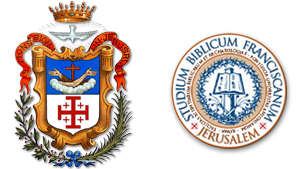...................................
[read in Italian] ![]()
The 1609-1610 edition of the Trattato was published under the name of Typographia Linguarum Externarum of Rome, while the 1619-1620 edition was printed by Pietro Cecconcelli “under the Medici Stars”.
The experience of Tipografia Medicea Orientale is perhaps a unique case in Europe from that era. In 1584 Cardinal Ferdinando de’ Medici (1549-1609), moved by both prestige and specific interests, established a publishing house in Rome to print Arabic and Syriac texts. This activity went on even after Ferdinando quit the cardinalate due to dynastic reasons and became the Grand Duke of Tuscany and got married. The main character of this business was the orientalist Giovanni Battista Raimondi (c. 1536 – 1614). Thanks to his skills and to the punchcutter Robert Granjon’s work, the typography had many fonts of Oriental types. The printing house should have published a polyglot edition of the Bible, but its editorial activity actually went to different directions, such as the 1590 Arabic Gospels (illustrated by Antonio Tempesta: see The Bible on the move, item C.2) or the 1594 Arabic version of Euclid. Due to serious economic problems, Raimondi bought the printing house, which was renamed Typographia Linguarum Externarum and had a rich collection of Oriental manuscripts.
| [click sulle immagini per ingrandirle / click on images to enlarge] |
Pietro Cecconcelli’s printing house operated approximately between 1615 and 1628. It was not only specialized in texts on current events, from edicts to festival programmes and plays, but also in other topics. Often texts were linked to the Medici’s court and its interests, such as Turkish topics (see Prospero Bonarelli, Il Solimano. Tragedia of 1620) or artistic ones (see Pietro Accolti, Lo inganno de gl’occhi, prospettiva pratica of 1625). Several times these editions saw the collaboration of the young artist and engraver Jacques Callot. By saying “under the Medici Stars”, Cecconcelli wanted to honour the signori of Florence, who had been dedicated the newly discovered four satellites of Jupiter by Galileo Galilei in his Sidereus Nuncius in 1610. In fact, the printer’s device itself contains their representation. This element strengthens the link between Amico’s edition and its dedicatee, the Grand Duke of Tuscany Cosimo II.
